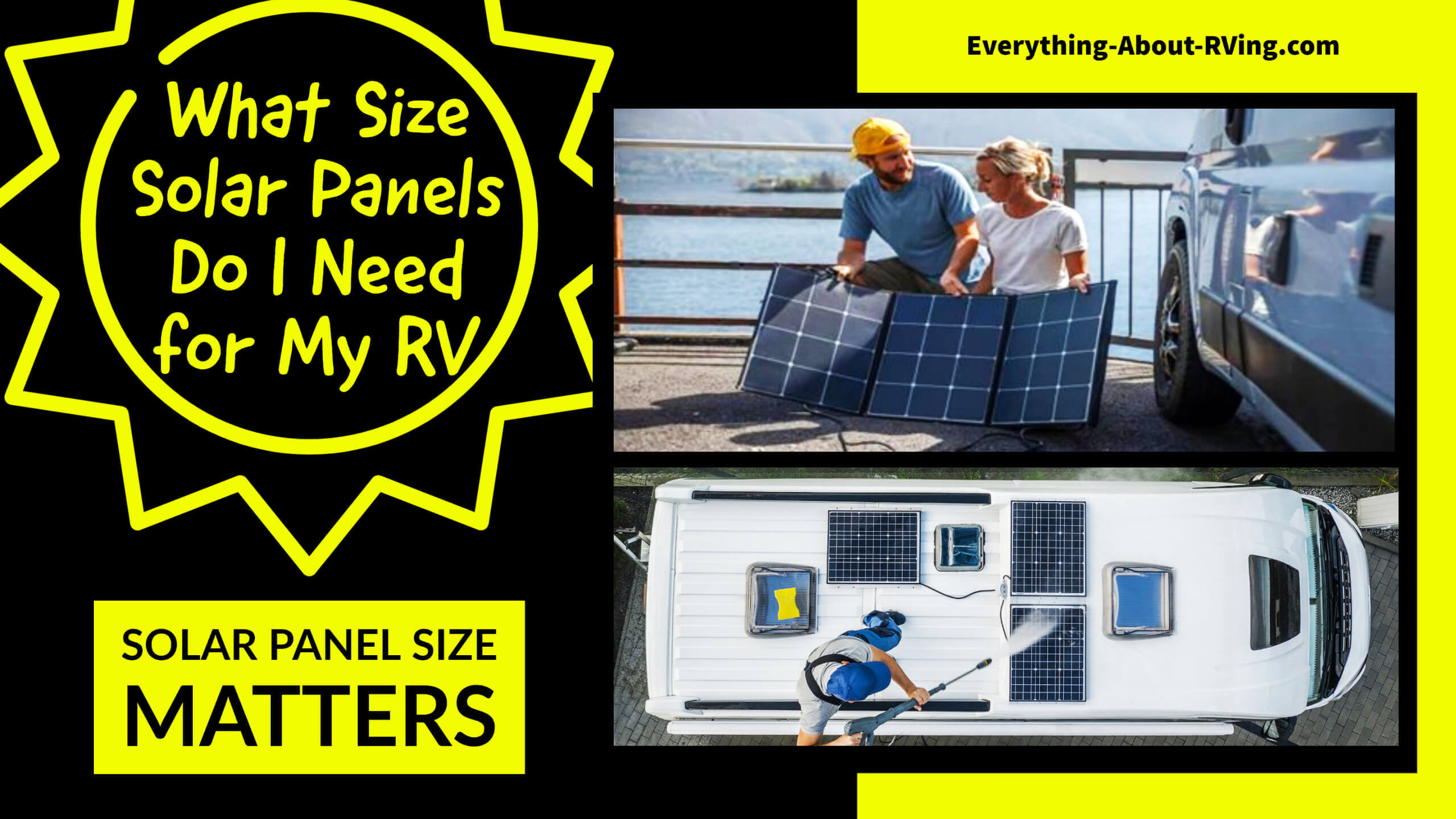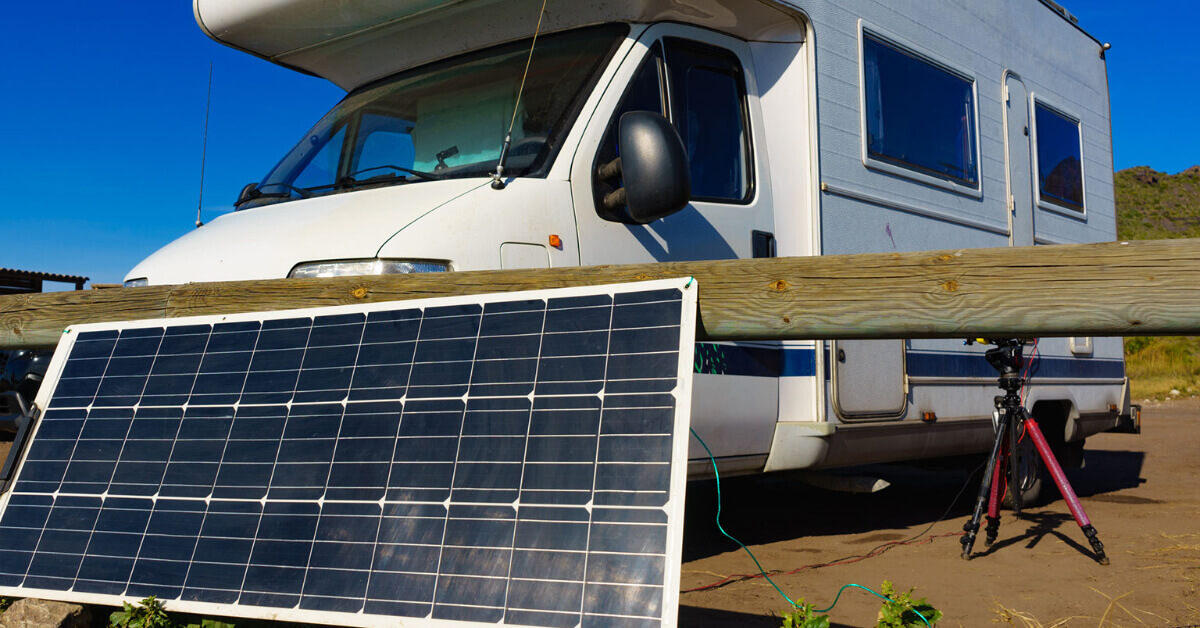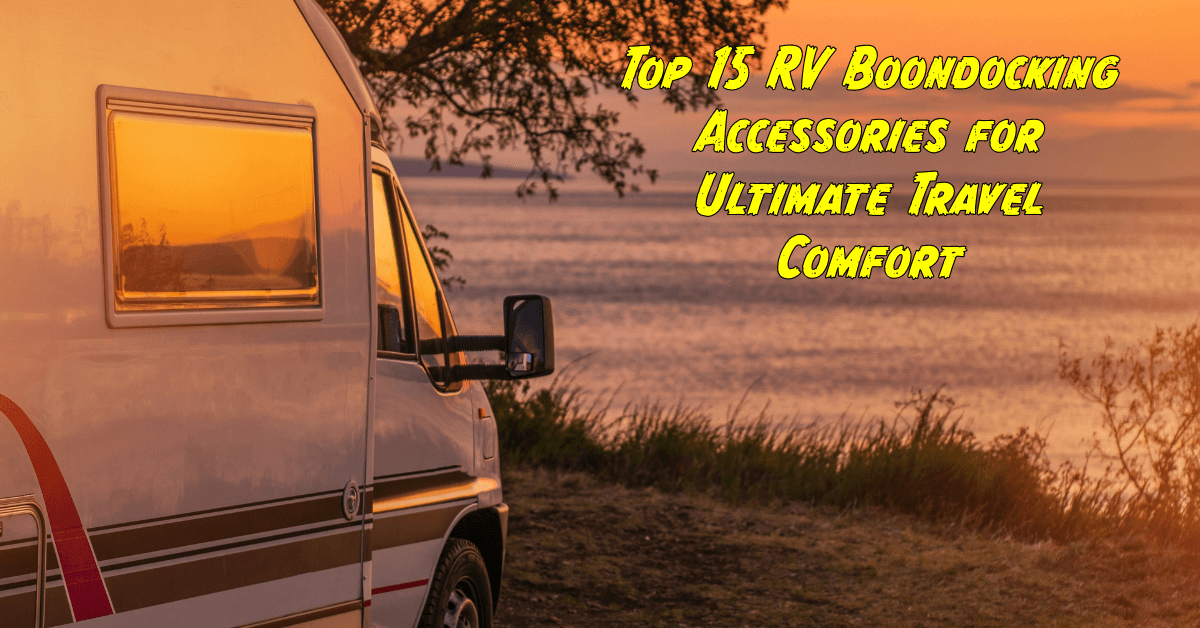- Home Page
- RVing Tips & Tricks
- Solar Panel Size
Determining the Solar Panel Size for Your RV
Solar Panel Size Does Matter!!!
We understand that opting to put solar panels on your RV or camper is a huge move. You're feeling a little overwhelmed as you peruse through the dozens of solar panels available. What kind of strength do you require? How many panels are there in total, and how big are they?
What can be done with solar energy? If you've asked yourself any of these questions or researched specific information on volts, watts, and amp-hours and found it to be as clear as mud, we're here to help. Furthermore, you must first determine your goals to determine how many solar panels you will require for your RV.
Understanding the two major components of the power equation that must be balanced to generate solar energy:
- "Power reserved" is the energy your solar panels give to your battery, and
- "Amount of power used" is the amp-hours you use each day.
How do you determine the Solar Panel Size for Your RV
Although the actual outcome will vary depending on the criteria listed above, you can use a few ways to get a general estimate. A 1000-watt solar panel kit (see here for reviews) can produce roughly 300 amp-hours per day as a general rule of thumb, so you can use that to estimate how many panels you'll need. Another option is to match your solar wattage to the amp-hour capacity of your battery.
For example, a 300-amp-hour camper battery would require roughly 300 watts of solar power. Keep in mind that solar panels lose 75-90 percent of their effectiveness on overcast days, so having a little extra solar electricity is a good idea.
How much energy is left in your RV battery
Looking at your battery to determine how charged it is often the first step in determining how much energy you consume in a day. A lead-acid battery should never be discharged below 50% capacity because this will cause the battery to deteriorate and limit its lifespan.
In general, a fully charged RV battery will deliver 12.6+ volts. A 50 percent-charged RV battery produces 12.06–12.10 volts on average. If your voltmeter shows less than this, charge your battery right away.
If your RV does not already have one, a dependable battery monitor or gauge is advised if you plan on boondocking frequently. There are numerous options available, ranging from simple versions to cutting-edge battery systems. Choose a system that displays a simple charge % indicator at the very least.
It's far easier to have your monitor inform you that your batteries are at 80% charge than trying to figure out what 12.4 on the voltmeter means. You can use this information to calculate how much electricity your RV has left each day. Check the voltmeter or read the battery monitoring system to discover how much electricity is remaining in your RV.
Sunlight: how many hours can you expect?
Your solar system's electricity output is related to the number of peak sunlight hours in your area. To calculate your hourly energy production to watts, multiply your consumption by 1,000. Subtract your typical hourly wattage demand from the amount of daily peak sunlight hours in your area. This is the amount of electricity your panels must produce every hour.
How much electricity do I need for camping?
You must first establish what you will require before installing solar panels. Solar panels can cover every inch of your RV, but they're useless if you don't have a way to store the energy they generate. On the other hand, underestimating the number of panels you'll need could leave you without electricity or force you to utilize your generator when you don't want to.
You can increase your battery bank's capacity if your battery isn't lasting as long as you'd like. Consider your RV's size and weight carrying capacity before installing more batteries. So, how much battery capacity do you need? You'll need to calculate how much electricity you consume daily to do so. You have a few alternatives to choose from.
Good Sam members enjoy instant discounts on fuel. Join Today!
Follow these simple steps to determine how much electricity you consume daily
- Save only as much energy as is absolutely necessary and avoid utilizing your generator. Simply set up camp as you usually would.
- Use a voltmeter or a battery monitor to check the level of your battery. It's important to note that lead-acid batteries should never be discharged below 50% capacity. The battery's life will be reduced if you go below this point.
- You can figure out how much energy you use daily by doing the arithmetic. Assume your lead-acid batteries have a 200 amp-hour capacity and are 50% charged after two days. This equates to 100 amp-hours used over two days, or 50 amp-hours every day.
Keep in mind that if you can't go a day without exhausting your battery, you should consider extending the battery bank in your RV. If you don't have enough battery capacity to store the power you need, all the solar panels in the world won't help. You should be able to run off your RV's batteries for at least 2-3 days before they die.
Selecting the appropriate number of panels
If there are six hours of usable sunshine each day, you'll need 32.58 amp-hours per day, which is close to 30 amp-hours. Two of these 100-watt panels will provide you with 65.16 amp-hours per day, easily meeting your 50-amp-hour requirement.
Your two 100-watt solar panels add up to 200 watts using your concept of battery amp-hours equaling solar panel wattage.
It's a good idea to add 20–25 percent capacity over your demands, depending on how reliant you are on solar power as your sole source, to guarantee you don't run out of power on a cloudy day or use more than you anticipated. The easiest way to examine your energy demands is to go RVing for a day or two and measure your energy consumption while you're gone. Using a simple DC energy meter, it's straightforward to perform.
Final Thoughts
Having all the answers to these questions will give you an idea of the correct number of panels for your RV's electricity generation needs—or at the very least, a reasonable range. Following that, a professional installer will evaluate your roof architecture, angle to the sun, and other elements to determine if and how you'll be able to physically place the correct number of panels on your RV's roof to meet your everyday energy need.
You should also include net metering when calculating how much money you'll save and make from your solar system. When you don't store your excess solar energy in a battery storage system, your utility provider will credit you for creating excess solar energy when the sun is shining and then let you use those credits when you're utilizing the conventional electricity grid at night.




